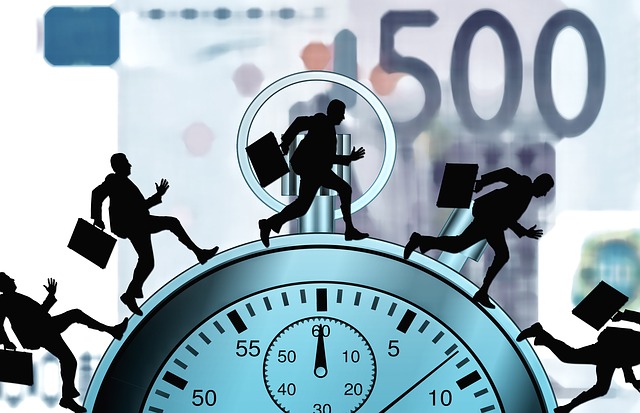Critical Incident Stress Management
After a horrible experience, one could feel intellectually and truly destroyed. They could go through various episodes of disrupting impact or have a large number of issues. This is when essential episode stress for the leaders (Critical Incident Stress Management) is reasonable since a coordinated and created procedure hopes to prevent and counter the effect of fundamental events. Critical Incident Stress Management diminishes the impacts of upsetting conditions, supporting the psychological thriving of the influenced individuals.
Fundamental Event Stress The board, or CISM, is a way to deal with pressure that is not exactly equivalent to standard interventions.
Fundamental event stress on the board is a many-sided model with different approaches and mediations that target helping overcomers of groundbreaking events. Such events can be devastating occasions to all-out collapses, incidents, or various showings that could introduce serious mental stunners.
Coming up next are a few of the courses through which Critical Incident Stress Management can go, as depicted. Arranged specialists can do CISM by means of, for instance, profound health teachers, emergency responders, or even specific CISM gatherings. It is done in a bid to offer beginning mental assistance as well as help with bracing those affected intellectually.
Introducing Critical Incident Stress Management: Fifteen Core Elements
Pre-Crisis Preparation for Critical Incident Stress Management:
CISM distinguishes between critical incidents, people, and organizations. For the occurrence of post-crisis moments, it requires that people and organizations are trained and supported in advance
Crisis Intervention:
In the aftermath of a critical incident, CISM embraces four forms of interventions. The first is aimed at safeguarding the well-being and safety of the employees. The second is directed at the employees’ initial psychological requirements.
One-on-One Support:
Available additional services include individual crisis intervention and counseling, which are useful for those who may need one-on-one attention. Also when clients display more severe psychosocial manifestations.
Group Interventions:
CISM includes many group-level interventions like defusing and CISD that present a structural framework that people may respond to to gain some insight into what occurred. People are able to share their emotions with a fellow person or a professional, if necessary.
Follow-up and Referral for Critical Incident Stress Management:
Another promising strategy that still needs continuing support and monitoring as identified by CISM is as follows.
Individuals who need more assistance are coordinated to another psychological wellness program or treatment program, by and large.
Basic Episode Stress: The executives allude to the most common way of distinguishing and overseeing awful occurrences that influence representatives’ personal prosperity inside the work environment. There are various advantages related to the execution of CISM.
Critical incident stress management can yield numerous benefits for individuals, organizations, and communities.
Psychological First Aid:
CISM can offer a rapid psychological intervention to normalize and assist with the basic needs of each victim. It plays a vital role in managing the disturbance, anxiety, and disruption of a critical incident.
Normalization of Reactions:
Thus, CISM also makes clients feel less alone by teaching people what is considered a usual response to trauma. They are told that such reactions are normal.
Promotion of Resilience:
To achieve this, CISM has sought to offer support in improving resilience. It will provide people with the right tools to cope with stress. It will also ensure to surround them with support and positive thinking.
Prevention of Long-Term Consequences:
CISM can prevent the emergence of PTSD, depression, or anxiety disorders if psychological needs are not met and tend to become severe after a critical event.
Organizational Support for Critical Incident Stress Management:
As inferred, CISM can assume significant importance in the organizational context. It helps reduce the effects of worst-case scenarios on workforce productivity, motivation, and organizational processes in general.
This research aims to establish how critical incident stress management can help the police force manage their stress through different coping strategies and self-care measures.
CISM, on the other hand, is an organized professional intervention that aims to help officers deal with the traumatic events of their daily work; however, there are also several things that the officers may do independently to enhance their restoration and recovery. Here are some effective coping strategies and self-care practices recommended in CISM:
Seek social support:
Get ready to seek emotional support from friends or relatives and join support groups.
Practice relaxation techniques:
post-stress-reducing strategies, including using techniques like deep breathing, meditation, or yoga to reduce stress.
Maintain a routine:
Routine activities may be helpful even during stressful periods as they can be comforting and help the individual to remain grounded.
Exercise regularly:
Chancing: physical activities decrease stress, positively influence mood, and increase well-being.
Engage in positive self-talk:
Remind oneself to counter negative cogitations and engage in acts of kindness towards oneself by changing mindsets and emphasizing more on the positive aspects.
Seek professional help for Critical Incident Stress Management:
If psychological distress continues or becomes worse, do not delay speaking to a health workforce member.

Conclusion
Critical incident stress management has several advantages in dealing with stressful events since it involves a systemic approach. CISM supports the role by offering help to victims, helping them build personal coping mechanisms, and showing that critical events may have severe effects on individuals in the long run. To sum up, while knowing and valuing psychological needs and processes, it will be possible to apply the principles and approaches of critical incident stress management to achieve a more significant recovery, greater resilience, and a better mental condition in people.
